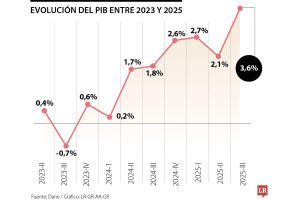Strong market performance this year has left investors with lofty expectations for 2024. Here’s why they may need to proceed with caution.
November was a great month for U.S. investors. The S&P 500 stock index rose about 9%, while a decline in U.S. Treasury yields helped the Bloomberg Aggregate Bond Index post a total return of more than 4%.
Buoyed by still-easy financial conditions, investors are once again anticipating a perfect combination of falling inflation, solid economic growth, a stable labor market and sustained corporate margins, supported by potential interest-rate cuts by the Federal Reserve next year.
The challenge is that these lofty expectations leave little to no room for error, and markets could see a reversal if this ideal scenario doesn’t play out as planned. Consider that:
- Stock valuations remain high. Price-to-earnings multiples for the S&P 500 have risen to a historically elevated level of more than 19, even as analyst estimates for 2024 earnings growth have declined in recent weeks. What’s more, the S&P 500’s “equity risk premium”—a measure of the potential reward investors can expect for taking on the risk of owning stocks—remains unattractive at only 100 basis points, about 200 basis points lower than usual.
- Investors appear complacent. The CBOE Volatility Index, or VIX, a measure of implied market volatility, has plummeted to cycle lows not seen since January 2020. And options market data shows relatively low “put/call ratios,” a widely used gauge of market sentiment, indicating there’s little interest among investors in trying to protect portfolios against declines.
Reasons for Caution
Investors may be eyeing this year’s gains and hoping for more to come. And it’s certainly possible that 2024 could bring its share of positive developments for investors, much the way a surprisingly resilient U.S. stock market defied bearish forecasts in 2023.
However, we believe investors should consider the realities of an economy under stress. Leading indicators are negative, corporate defaults on loans are picking up and bank lending has tightened. In addition, the “Sahm rule,” an indicator for identifying recession signals, suggests we may see the onset of a recession if the U.S. unemployment rate rises to 4%, which is only about a tenth of a percentage point above the current level. Also, even as markets assume imminent rate cuts by the Federal Reserve—and indeed, markets are forecasting multiple rate cuts in 2024—a recent University of Michigan sentiment survey shows that consumers still expect inflation to rebound to 4.5%, well above the central bank’s target.
We’ve seen markets interpret “bad news” for the economy as “good news” for stocks before. For example, developments like slowing economic growth have fueled investors’ hopes that the Fed will start cutting interest rates and thereby help lift stocks. However, bad news for the economy may indeed become bad news for markets, as slowing growth weighs on labor markets and corporate margins.
Given this environment, consider looking for investments that provide yield and companies that have quality cashflows and realistic earnings goals. Investors may find value-oriented opportunities among financials, U.S. small- and mid-cap stocks, and international equities. And although you should consider the tax implications of your investments year-round, now may be a good time to implement tax-smart strategies as we wrap up 2023.







